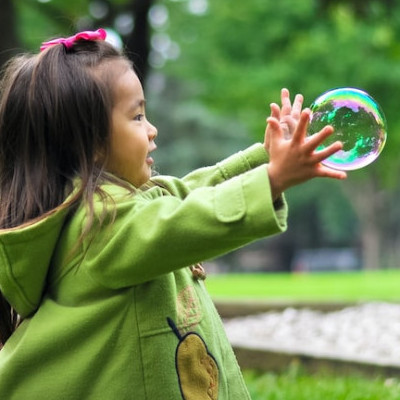 Uncategorized
Uncategorized
clothes designed for toddlers protection.
Generally speaking, the worst fear for a parent resting in the back of their mind, is the safety of their children. Especially when they are playing with friends, at home with a babysitter, and of course at school in this day’s world. However, parents almost never consider the many dangers lurking in the yard of their home, on the public playground, the hiking trail, public swimming pools and the beach. Of course, we all know that we cannot eliminate any of the dangers that may exist in these places. Therefore, parents can take the precaution to protect their children with clothes designed for toddlers’ protection. Of which has been offered in many outlets stores but for reasons other than what will be discussed here. This has nothing to do with the sale of clothes designed for toddlers, this is all about information.
Yards at Home

Most homeowners are people who take good care of their homes. This you can see within city limits or in the country when you take a Sunday drive. In fact, most of these homes are places that you would love to own. And perhaps you own one of these beautiful homes. The owners take pride in the way their lawns are displayed. Usually the thought is, is the condition of my lawn, is it as nice as all the other yards on the block. As you probably know, It is natural for a person to desire a beautiful home. And a plush green lawn is for the making of a great looking home.
Now what is it about our yards that should be a concern for us, when it comes to our children, especially toddlers? You may think that every safety feature is in place for children. This may be true for the inside of the house, but how about the outside? A person may think, everything that could be a danger to my children has been put out of harm’s way. And the lawn is cut weekly, trimmed and treated for weds. Though the yard is well maintained there is always danger to be avoided, some at whatever the cost may be.
Let’s explore the dangers, that may be lurking, In a well-maintained lawn. The first one to watch out for of course is poison-ivy growing in or around the flower beds. You may find starter feeds of it growing at the base of the house or along fences. Children have the tendency to play around these places where this toxic weed grows. And if you ever got into poison-ivy, you know how bad it can affect you, just think how miserable it could make a child feel.
The next danger is lime disease, it can be carried to areas where you would never expect to find it. You guessed it, your finely groomed lawn and flower beds can be a home to Ticks. The question, how do ticks get into my lawn or flower beds? Ticks will use whatever comes into their presence that is warm blooded to hitch a ride. Such as deer, squirrels, rats, mice, dogs, cats and yes humans. And for whatever reason, many times the ticks are not well fastened to their ride and fall on the lawn or end up in the flower bed.
Quote from google.
About Lyme | Lyme Disease Statistics, Cases, & Prevalence
the people most apt to get Lyme Disease
Children aged 3 to 14 are at the greatest risk for contracting Lyme disease, due in part to being more active outdoors, with more than 200 cases per day. The next age group most at risk is people over 50, who are also more involved in outdoor leisure activities like gardening, hiking, or playing golf. People who work outdoors for a living, including…
See more on globallymealliance.org (End of quo
 Something to keep in mind when it comes to pets, such as dogs, cats and any other pets that spend time outdoors. These pets are very likely to enter tick habitats. Such pets upon returning to the home can transmit any ticks they may have picked up. Thus, it is very important to check each pet whenever you suspect they have been in the environment of ticks, or the animals can be treated by a vet for ticks.
Something to keep in mind when it comes to pets, such as dogs, cats and any other pets that spend time outdoors. These pets are very likely to enter tick habitats. Such pets upon returning to the home can transmit any ticks they may have picked up. Thus, it is very important to check each pet whenever you suspect they have been in the environment of ticks, or the animals can be treated by a vet for ticks.
Some ways to protect the outdoors of a home from ticks and toxic weeds is spaying the lawns with approved materials. Keep the grass of the lawn mowed, flower beds cleaned of weeds and tall grass. Cut any brush back from the edge of the lawn when appropriate. And the least, dress children with clothes designed for toddlers protection when playing outside the home and check for ticks on your children after playing out of doors.
Public Swimming Pools, Beaches, Oceans and Rivers.

Most everyone loves the swimming pool, ocean beaches, rivers and lakes for taking a dip in the water. These are the places to have a lot of fun with friends and family. However, there are dangers associated with these places of recreation. These are just a few hazards you are subject to encounter.
(Quoted from Healthline.com)
Water quality hazards
Candess Zona-Mendola, a food and water safety advocate from Houston who litigates food and water contamination cases, said poor water quality can make a swim unsafe.
“One of the biggest hidden water dangers we see in the summer season is vibrio bacteria in saltwater environments, like the ocean,” she said. These are flesh-eating bacteria that peak in the summer months, but exposure to vibrio can happen any time of the year.
“Due to the rise in ocean temperatures and global warming, we are seeing more and more vibrio cases,” Zona-Mendola said. To prevent a vibrio infection, make sure not to drink the water or have any exposed wounds when you take a dip. And when you get out of the water, make sure to rinse off to avoid contamination.
Similarly, the brain-eating amoeba known as Naegleria fowler Trusted Source can enter the body through the nose and travel to the brain. Swimmers who want to prevent the rare occurrence of its spread should use a nose clip while swimming.
The amoeba is found in warm freshwater environments such as lakes, hot springs, and rivers. Pool chemicals, which can make water quality safe, can also be harmful to swimmers with asthma, according to Susan Richardson, PhD, a chemistry professor at the University of South Carolina.
That’s because of trichloramine (a disinfection byproduct of chlorine), which is believed to be the culprit. The substance is created when chlorine and urine combine in the pool.
Those who spend a lot of time in indoor pools also may be more prone to sore throat, burning eyes, and other cold-like symptoms.
‘Dry drowning
hat about “dry drowning,” which has been in the headlines lately? Griffiths said the name is a misnomer, but that there is a risk to people who aspirate (breathe in) water.
“You can’t drown without getting water into the lungs,” he said. “In extremely rare circumstances, however, children who aspirate water can drown a short while after leaving the water if untreated.”
He says water can damage the lungs within two hours of being inhaled and also cause coughing, fatigue, and irritability. If a child has aspirated water and doesn’t seem to be acting normal, they should be brought to the hospital. (End of quote)
Just about any open body of water has other hidden dangers. Such as broken glass, tin cans, sudden drop offs, under currents usually found in oceans and rivers. Most the time adults are aware of such dangers. It is the children ages 2 to 14 who are the most susceptible to getting into trouble and drowning, or seriously hurt. (End of quote)
Public Playground
Children love playgrounds, there they find swings, slides, sand boxes, monkey bars, merry-go-rounds and a lot of other nifty playthings. All these playthings are great to entertain our children with. However long children may be allowed to enjoy the playground and never experience any unsafe conditions. This does not mean that playgrounds are always safe for children to play at.
Though young children such as toddlers and older children are accompanied by their parent(s), babysitters, or other family members don’t mean all is safe. Outside of the normal knee scrape, fall from a swing or slide, there are hidden dangers at playgrounds that are common to these areas.
Frequently playgrounds are visited by wild animals such as deer, skunks, rabbits and dogs to name a few. These animals all are carriers of one thing. You probably guessed it; they all are subject to spreading ticks. And as mentioned earlier, many ticks carry Lyme disease and Rocky Mountain spotted fever.
If children are not properly dressed to prevent ticks from getting on their legs or arms. They are subject to having a tick attach them self in an area you can’t see. You don’t know what these critters may carry. Remember some of these ticks can be small and hard to see.
For prevention, dress your children with socks that fit tightly over under garments such as long legs. And do the same for the upper body, Clothing the children with long sleeve shirts. Children may complain but prevention is the safest rout to take, especially when it’s toddlers clothing.
Hiking Trails

Some of the most pleasant times people spend together with their children, is hiking through forest and fields. The hiking may be on manmade trails, or the trails made by animals over a long period. Whichever it may be, the trails offer a great place for exercise and pleasure.
During these hikes, you are likely to see different kinds of animals. Depending on what part of the world you are enjoying this walk, you may see big cats, bear, deer, fox, and many other kinds and maybe some you have never seen before.
Children love to run and explore the scenery that exists along these ‘trails. They have’ great times checking every new flower that may be encountered. And many times, these trails pass by streams of water which children love to check for fish, frogs and wild waterfowl, and play in it.
Whenever a family hike in the wild is planned, whether it be in the forest or countryside, a parent must take precautions. Children must be clothed for the occasion with protection in mind. Outside of mosquitoes.
There are many other creatures that could cause great harm to children and adults. Therefor the adult parent(s) must be on the alert for snakes, small wild animals, bears etc.
With all of that being said, there are dangers off tick bites, poison ivy, poison sumac, poison oak and many other dangerous plants. These are plants children have no idea of what misery they can cause.
Once again for a beautiful day out on the walking trail, take the time to brief everyone about the dangers. Be Always prepared for the unexpected. Dress your children for the hike with long pants and long-sleeved shirts, that goes for all children.
And be especially cautious with your toddlers’ clothes, these little ones are more apt to get in trouble before a parent ma realize.
Conclusion
This post is written for information on Spring, Summer and Fall places of recreation. This only covers some obvious dangers existing on and around the frequented areas of home and recreational sites.
The most important recommendation is to take the extra step of protecting the youngest members of the family. Always dress the Toddlers and children up to ten years of age when hiking or on the playground with long sleeve shirts and long-legged pants.
If you ever need a hand or have any questions, feel free to leave them below and I will be more than happy to help you out.
All the best,
Cliff
clothsdesignrdfortoddlersprotection.com
